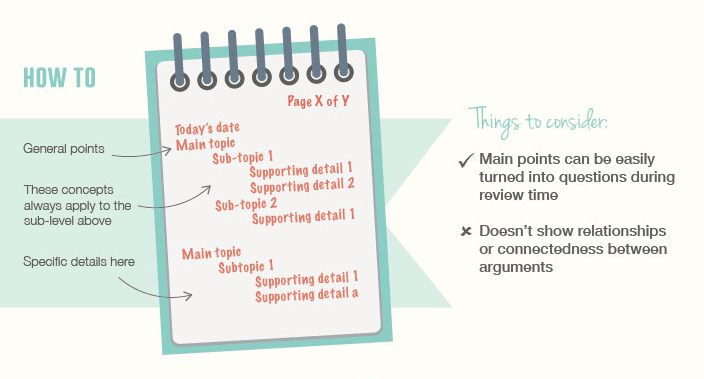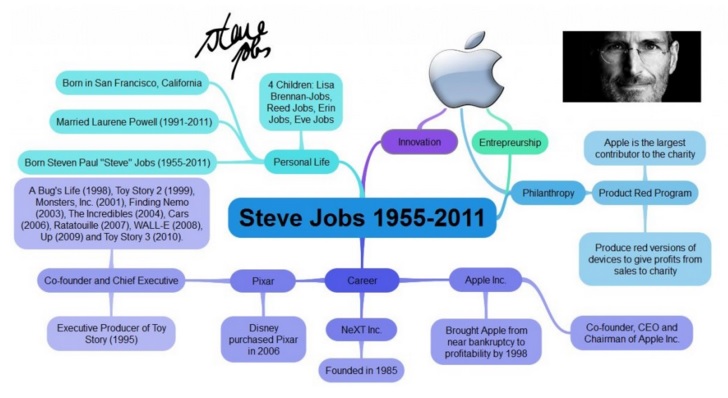
Have you noticed that you forget half the things you learned within 20 minutes after a lecture? Or that you only remember 10% of what was said during a class? Sounds terrible, isn’t it? But actually, there is no reason to worry if you have note-taking skills. Believe it or not, taking notes can help you to absorb 80% of new information and refresh your mind on your notes. These skills can also aid you to stay more focused on what was being taught during the lecture and actively involved in the class. If you aren’t good at taking notes or want to develop your abilities, try these 3 effective note-taking techniques listed below.
1. Improve your Outline Notes
The outlining technique is one of the most habitual forms of note-taking used by college students. An outline generally arranges the material in a highly structured and logical manner that helps you in forming a skeleton of the lecture topic. This method is highly beneficial for multiple subjects except for science classes such as physics or math, where a lot of formulas and graphs are involved.

2. Use the Cornell Note-Taking System
 The Cornell technique is based on 2 columns: the left one contains multiple keywords or concepts, whereby the right one includes a description or notes connected to the left column. As illustrated in the figure on the left, there is also a small but very important area at the bottom for summing up each page of notes. This system involves 5 steps: record, reduce, recite, reflect and review. Doesn’t this method seem like a great way to take and organize all of your concise notes?
The Cornell technique is based on 2 columns: the left one contains multiple keywords or concepts, whereby the right one includes a description or notes connected to the left column. As illustrated in the figure on the left, there is also a small but very important area at the bottom for summing up each page of notes. This system involves 5 steps: record, reduce, recite, reflect and review. Doesn’t this method seem like a great way to take and organize all of your concise notes?
3. Learn How to Mind Map
Mind mapping is another handy technique that helps college students comprehend material, create new ideas, and build connections easily in the visual environment. Pictures, graphs, and diagrams aid students’ brains to process information sequentially rather than writing long paragraphs of text. A mind map is often created around a single main idea, drawn as an image in the middle of a page. It can be associated with words, images, facts, figures, concepts, or parts of words. The branches can move on different sides from the central idea. It helps to indicate how different parts of information are connected. This method is ideal for students with a relatively strong visual memory.

Watch an inspiring TED Talk by Rachel Smith about how effectively visual notes can be used in a classroom.
